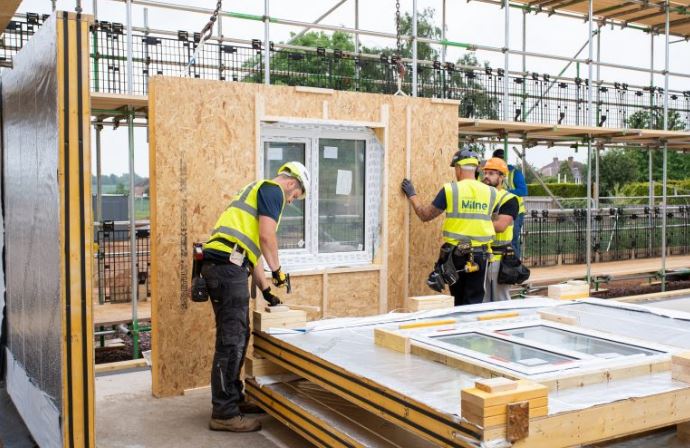Timber Frame Housing, A Time Effective Solution? (2013)
Timber frame housing is not a new concept. Throughout history it was one of the most commonly construction materials and examples of timber framed houses from the 12th century are still in existence today. Softwood based timber housing systems (similar to some of those in use today) date back to the 1780’s with many examples dotted along the East and Southern coasts. So how did it come about that we no longer see timber framed construction as a traditional form of building houses, when 70% of the houses in the world are constructed using this method?
A major reason for this was that in the 1600’s and 1700’s large areas of forest were offered and felled to meet the ever increasing housing market in England, these areas of forest were from all over the UK, after the Great Fire of London even more pressure was put on the timber available for the rebuilding works that needed to be undertaken. The timber used during this period was oak as it was strong and durable enough to be used in its natural form, however oak has a slow growth rate and the demand for timber was greater than the supply.
The result of this was that by the beginning of the 18th century there was not enough quality timber available to sustain the building work that needed to be carried out; this in turn led to the use of bricks and blocks to be used as the walling materials. The use of bricks and blocks has evolved over the centuries from 450-600mm solid stone walls to 300mm cavity walls used today; this method is now seen by many as the best and traditional way in which to build new homes. In recent years, while the housing sector as a whole has struggled to meet demand, one area has shown consistent growth, Timber Frame.
This study is set out to ultimately discover weather timber frame provides a time effective solution to other traditional methods of construction. The main aim within this study is to find, and show if there are advantages with the time taken to complete a construction project using timber frame when in comparison to traditional masonry construction, mainly within the UK housing sector. The Objectives are as follows;
- To show the advantages of timber frame construction in respect to traditional masonry construction within the UK housing sector
- To gain time comparisons of timber frame construction and traditional masonry construction within similar construction projects
- To seek and personally obtain professional views on timber frame construction
- 12,000 words – 96 pages in length
- Excellent use of literature
- Good analysis of the subject area
- Well written throughout
- Includes questionnaire
- Ideal for building studies and construction students
1. Introduction
Background to Timber Frame
2. Construction Overview
Construction overview
Methods of Construction
Accommodating movement
Commonly Perceived Problems
3. Aims and Objectives
Outline
Methodology
Parameters of study
4. Literature Review
Review
Summary
5. Case Studies
Outline
6. Questionnaires
Introduction
Analysis of Data
Estate agents results
Manufacturers Results
7. Conclusions and Recommendations
Overview
Aims and Objectives
Limitations of Study
Recommendations
References
Appendix Section
Questionnaire

